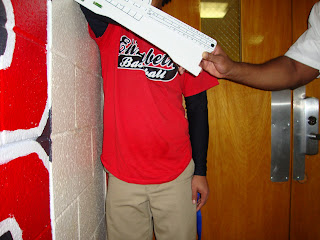Shame on me if I make this stuff seem more complex than it is, because its not my intention. Please call me out on it when I do, so thank you for your comment SLS. I want to keep things simple, inexpensive, and EFFECTIVE as possible for the high school ATC. After I punish myself in the time out corner for 5 minutes.
1. Pedagogical resources (Free). These guys have marketing in mind, but after you read you'll see what I mean:
http://sethgodin.typepad.com/
http://bobsutton.typepad.com/
2. Books:
about $20 bucks a piece:
A. Athletic Development: the Art & Science of Functional Sports Conditioning- Gambetta
This is the scaffolding for your rehab programs.
B. Functional Training for Athletes at all levels- Radcliffe.
Provides a great menu to plug into the scaffolding.
Now a little more expensive:
Books:
1. Physical Education for Children: Building the Foundation- Gabbard, LeBlanc, Lowy
I would have placed this book at #1, but its out of print and can only be purchased from re-sellers for top $. The authors never intended it for rehab purposes, but it is one of my favorites.
2. Functional soft tissue examination and treatment by manual methods, 3rd edition- Hammer. Expensive, about $150. But, an extremely valuable resource that should be in every A.T. room.
DVD: Ankle Sprain, Chain Reaction Rehab- FVD 2.10, Gary Gray.
It is selling for $80 on Perform Better, but you might be able to find it cheaper. You'll see Gary's functional approach in action and get an idea what it looks like.
...and think about joining us at the Gambetta Athletic Improvement Network (GAIN). Yeah its expensive, but once your in your in.
http://www.thegainnetwork.com/Merchant2/4.12/merchant.mv?Screen=CTGY&Store_Code=Gain&Category_Code=Apprentorship
**************************************************************************************
Remember, SLS and others, that functional training=purposeful training. Otherwise you are just wasting the precious little time that you have to work with your athletes. Did I articulate myself better here? Let me know.













